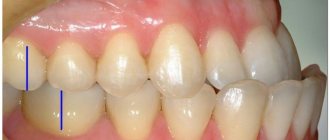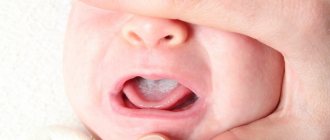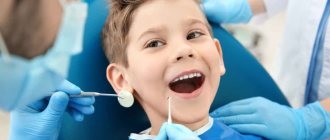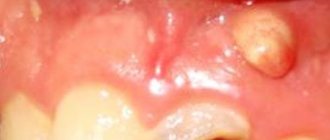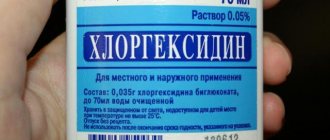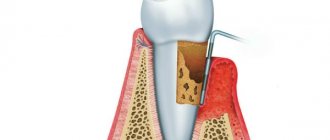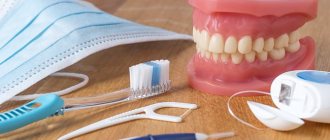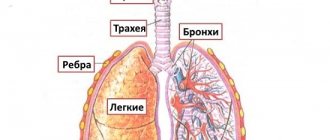Author of the article:
Soldatova Lyudmila Nikolaevna
Candidate of Medical Sciences, Professor of the Department of Clinical Dentistry of the St. Petersburg Medical and Social Institute, Chief Physician of the Alfa-Dent Dental Clinic, St. Petersburg
More than 300 varieties of microorganisms live in the oral cavity (streptococci, lactobacilli, fungi of the genus Candida, staphylococci, etc.), which make up its microflora, or microbiota. Constant humidity, optimal temperature and pH values, the presence of food residues - all this creates favorable conditions for the proliferation of various types of microbes.
The composition of the oral microbiota is individual for each person, so the concept of “normal microflora” is also individual. Many opportunistic microorganisms that make up the normal microflora of the oral cavity play an important role in the etiology and pathogenesis of caries, diseases of the mucous membrane and periodontal tissue. The microbiota of the oral cavity is involved in the primary processes of food digestion and absorption of nutrients, in the synthesis of vitamins, and in maintaining the proper functioning of the immune system.
The qualitative and quantitative composition of microflora usually changes little throughout a person’s life, but under certain factors this is possible. In this case, they speak of an imbalance of microflora, that is, dysbacteriosis, when the proportion of normal microflora decreases, and the growth of pathogenic microorganisms increases.
The ailment itself, designated by the term “dysbacteriosis,” is not a disease and is not included in the official international classifications of diseases. It should be considered as a set of symptoms indicating the presence of pathological processes in various body systems. Occurs in adults and children. Let's talk about oral dysbiosis: how it manifests itself, why it is dangerous, how to treat it.
Stages of development of dysbiosis in the oral cavity
Some researchers identify several stages in the formation of oral dysbiosis:
- Stage 1 - dysbiotic shift (compensated dysbiosis). Characterized by an increase in the number of one type or several types of pathogenic microorganisms in the oral cavity. At this stage there are no manifestations;
- Stage 2 - subcompensated dysbacteriosis. There are fewer lactobacilli, and barely noticeable manifestations appear;
- Stage 3. The lactobacilli needed by the body are replaced by pathogenic microorganisms;
- Stage 4. Yeast-like fungi begin to actively multiply in an unnatural niche for them.
At stages 3 and 4 (decompensated dysbacteriosis), inflammatory elements, ulcers, and excessive keratinization of the oral epithelium may occur.
All this can lead to the development of stomatitis, periodontitis, and periodontal disease. An infection of the nasopharynx may occur.
Oral candidiasis
Of all the pathological processes of the oral mucosa provoked by pathogenic fungi, lesions by yeast-like forms take the lead.
Oral candidiasis (thrush) is a disease of the oral mucosa associated with the abnormal proliferation of yeast fungi of the genus Candida. The presence of these “neighbors” in the human body is normal. But under certain circumstances, fungi begin to actively multiply. An unpleasant white coating forms on the mucous membrane, causing itching and other discomfort.
Oral candidiasis is often a concomitant of reduced immunity. It is believed that this disease affects young children and the elderly. People who wear dentures are also at risk.
Long-term use of corticosteroid drugs, cytostatics or antibiotics can cause dysbacteriosis and, as a result, oral candidiasis.
If thrush affects the oral mucosa of an adult, this may be a symptom of a hidden serious disease. Such patients are recommended to undergo the necessary tests for diabetes, cancer and HIV.
Symptoms of oral candidiasis
Oral candidiasis can be acute - rapidly developing, or it can take a chronic form, when the manifestations of the disease either appear or fade.
A visible sign of thrush is a light, sometimes cheesy coating on the mucous membrane. Most often, the foci of rashes are on the tongue and the inner surface of the cheeks, but candidiasis can also affect the palate, gums and even the back wall of the pharynx.
Rashes caused by the spread of fungus may pass without unpleasant symptoms, or may bleed if touched. Oral thrush is accompanied by itching, especially during eating or hygiene procedures.
The patient's mucous membrane may swell, turn red, and sometimes the taste buds on the tongue become enlarged. A person experiences a feeling of dry mouth.
Oral candidiasis can be aggravated by allergic reactions to the fungus.
Advanced oral candidiasis causes fever and general malaise. If the rash affects the larynx, pain is observed when swallowing.
If oral candidiasis is not treated, it transforms into an acute atrophic form, in which pain and dryness intensify significantly.
oral candidiasis
Treatment of candidiasis involves an integrated approach:
- eliminating unpleasant symptoms with the help of symptomatic medications - using ointments and rinsing or lotions. Such drugs act on the mucous membrane, relieving itching, burning and swelling;
- antifungal therapy - drugs for oral administration that kill fungi and their spores, and also inhibit the proliferation of the fungus;
- taking general strengthening agents and vitamins that support the immune system and stimulate the body to fight candidiasis.
A treatment regimen for oral candidiasis should be developed by an experienced dentist. Taking medications inconsistently with a doctor can lead to progression of the disease and deterioration of the general condition. The fungus can adapt to the medicine and in the future the treatment of candidiasis will become much more complicated.
Disease prevention
With complex treatment of thrush, you need to rebuild your lifestyle and diet. The same tips are suitable for preventing the disease:
- Eliminate (or significantly reduce your intake of) sugar-containing foods and yeast-based baked goods and drinks. Sweets, baked goods and beer support the development of unhealthy yeast microflora.
- at least for the duration of treatment of candidiasis, it is necessary to refrain from alcohol of any strength and smoking. Bad habits also affect the condition of the oral mucosa.
- support the body's defenses. Include more fruits, berries and seasonal vegetables in your diet, and take vitamins regularly.
To prevent oral candidiasis from returning:
- Do not overuse mouth rinses, especially inexpensive ones. They can disrupt the natural acid-base balance of the mucous membrane.
- Perform good oral hygiene. Brush your teeth at least twice a day, and be sure to floss (dental floss) after meals.
Be sure to get checked by a dentist, even if nothing worries you. First of all, this should be taken as a rule by those who have dentures, as well as people with diabetes, tuberculosis, and cancer.
Symptoms of oral dysbiosis
Symptoms designated by the term “oral dysbiosis” occur in many different diseases and syndromes, so the disease is difficult to diagnose. Let's name the signs of an imbalance in the oral microflora:
- bad breath (halitosis);
- metallic taste, burning sensation in the mouth;
- the development of candidiasis, or thrush - a white coating on the tongue and mucous membranes of the cheeks;
- inflammation of the mucous membranes and gums;
- swelling, redness and soreness of the tongue;
- The appearance of so-called jams in the corners of the mouth is characteristic.
The pathology of normal microflora in the mouth is fraught with the danger of endogenous infections.
The listed manifestations are due to the following changes:
- colonization resistance (local immunity) of the mucous membrane is disrupted - yeast-like fungi easily adhere to the surface of the epithelium, where there are optimal conditions for reproduction;
- the bacterial antagonism of normal microflora changes significantly - normally, antagonistic microbes do not allow pathogenic fungi to actively multiply, but with dysbiosis, the former are destroyed, which provokes rapid proliferation of Candida fungi;
- In patients, a significant shift in local protective factors is detected - the weakened defense does not cope with its function, so the volume of pathogenic microflora increases unhindered.
Methods for restoring oral microflora
Treatment of dysbacteriosis depends, first of all, on the nature of the pathogen, which is determined on the basis of dental examination.
Unfortunately, making a diagnosis of dysbacteriosis is often difficult, since at the initial stage the disease does not manifest itself in any way. At the slightest suspicion of a disease, the dentist refers the patient to a smear from the surface of the mucous membranes, blood and urine tests.
Depending on the diagnosed cause of dysbiosis, the dentist may prescribe the following methods of treating the disease:
- Sanitation of the oral cavity. The doctor removes tartar and fills all teeth affected by caries, and, if possible, treats the gums and mucous membranes.
- Treating the oral cavity with antiseptics to eliminate pathogenic microorganisms.
- Taking immunostimulants to strengthen the body and activate its defenses.
- A course of probiotics to restore the balance of beneficial bacteria in the oral cavity.
- Taking vitamin complexes for general strengthening of the body with vitamin deficiency. Properly prescribed vitamins promote cell regeneration and strengthen bone tissue.
In rare cases, antifungal agents and antibiotics are prescribed.
As a rule, the duration of treatment for dysbiosis is 2-4 weeks and depends on the patient’s health status, the number of foci of inflammation and existing complications of the disease.
A reliable assistant in the fight against dysbiosis will be the probiotic complex ASEPTA PARODONTAL*, a source of lactobacilli to restore the microflora of the oral cavity. This unique complex with patented strains of lactobacilli and vitamin D has the ability to effectively restore oral microflora. The complex normalizes the bacterial flora in the oral cavity, eliminates bad breath and prevents the formation of biofilms of pathogenic microorganisms.
To improve the effectiveness of the prescribed therapy, dentists recommend giving up bad habits (at least for the duration of treatment), reviewing the diet, paying attention to plant foods, and be sure to take care of the oral cavity after each meal.
Reasons for the formation of oral dysbiosis
The reasons that lead to disturbances in microbiocenosis in the mouth are, for the most part, the same as for dysbacteriosis in other areas of the gastrointestinal tract. These include:
- prolonged and uncontrolled use of antibiotics;
- use of antibacterial and antiseptic agents for mouth rinsing. Long-term use of bactericidal rinses, antimicrobial toothpastes, and local antiseptics like chlorhexidine leads to the destruction of not only harmful, but also beneficial bacteria in the oral cavity. At the same time, the resistance of pathogenic flora to antibiotics increases;
- infectious and inflammatory diseases, intoxication and weakening of the macroorganism against their background;
- hypovitaminosis - lack of vitamins.
Often the cause of dysbiosis in the mouth is incorrect or insufficient oral hygiene. A factor that provokes a violation of the microflora of the oral cavity is smoking.
Influence of the state of the oral microflora on other organs and systems
The connection between the general condition of the body and dental health is known. Thus, those patients who have oral diseases are more likely to develop cardiovascular diseases. Clinical studies confirm the presence of oral bacterial microflora in the blood and atherosclerotic plaques. Periodontopathogenic microflora is the main source of local and systemic chronic inflammatory process. Acts as a risk factor for the development of coronary heart disease.
In addition, scientists have discovered a connection between bacteria living in the mouth and the occurrence of migraines.
Another dangerous consequence of disruption of the oral microflora is the aggravation of intestinal and esophageal cancer. One study found that bacteria living in the mouth can trigger the development of colon cancer.
What is the microflora of the oral cavity?
Surprisingly, approximately 160 species of microorganisms live in the mouth of a healthy person. You've probably heard that “the mouth is the dirtiest place in the body.” This statement is partly true: the oral cavity is one of the most populated parts of the human body.
Microorganisms enter the oral cavity with food and water, as well as from the air. It is in the mouth that the most favorable conditions for the development of bacteria are observed. This part of the body always has uniform humidity and temperature (approximately 37 °C). The abundance of nutrients, sufficient oxygen content, the presence of folds in the oral cavity, interdental spaces and gum pockets, and slightly alkaline pH provoke the proliferation of various bacteria.
Microorganisms are unevenly distributed in the oral cavity. Their maximum number is observed on the surface of the teeth and on the back of the tongue. One gram of dental plaque contains approximately 300 billion microbes, and saliva contains approximately 900 million per 1 milliliter.
- 30-60% of the microflora are facultative and obligate anaerobic streptococci;
- part is occupied by Veillonella, coccobacteria, which ferment acetic, pyruvic and lactic acids to water and carbon dioxide. It is Veillonella that neutralizes acidic foods, so many dentists consider them as destroyers of cariogenic bacteria;
- Bacteria of the genera Propionibacterium, Corynebacterium and Eubacterium are also necessarily present in the mouth, which actively produce molecular oxygen, synthesize vitamin K and promote the development of obligate anaerobes. Some types of such bacteria provoke purulent inflammation.
- Lactobacilli are strict anaerobes. There are more than 10 types of similar bacteria in the mouth that form a biofilm in the cavity. The vital activity of these microorganisms creates a favorable environment for the development of normal microflora. Lactobacilli ferment carbohydrates to form lactic acid, lower the pH, and most importantly, prevent the development of pathogenic, putrefactive and gas-forming microflora.
- Rod-shaped lactobacilli in a certain amount are, like streptococci, producers of lactic acid.
- Bifidobacteria are necessary to ferment various carbohydrates, as well as produce B vitamins and antimicrobial substances that inhibit the growth of pathogenic microorganisms. Moreover, bifidobacteria are a bunch of epithelial cell receptors: they form a film that prevents the colonization of pathogenic bacteria.
It would take a very long time to list all the types of bacteria that populate the microflora of the oral cavity. It is important to understand that each person is unique, and to assess the “normality” of the microflora, you need to know the characteristics of a particular organism.
For example, in one case, a large number of lactobacilli in the oral cavity will preserve teeth, and in another, the formation of a large amount of lactic acid during their vital activity will retard the growth of other important microorganisms. The number of staphylococci, dysentery and typhoid bacilli decreases, carious processes become more active, and the microflora of the oral cavity will have to be restored.
Diagnosis and treatment of oral dysbiosis
Oral cavity dysbiosis syndrome in the initial stages of development is detected during laboratory tests. To diagnose oral dysbiosis, microbiological examination of a smear from the oral mucosa or saliva is used. When diagnosing, the number of opportunistic microorganisms in the test material is determined.
Important: it is necessary to accurately establish the root cause of the disease, which a comprehensive examination of the body will help with, and treat the primary disease.
For pathologies of the gastrointestinal tract that affect the condition of the oral cavity, they are first treated.
If the balance of the oral microflora is disturbed, treatment is mainly used in the form of sanitation and taking medications to normalize the microflora in the mouth. However, all drugs that are used to treat oral dysbiosis are considered drugs with unproven effectiveness. The following is used as therapy for this condition:
- eubiotics - needed to increase the number of beneficial bacteria in the mouth;
- immunomodulators - increase local immunity and prevent the growth of pathogenic microorganisms;
- antimicrobial and antifungal agents.
Possible complications of dysbiosis
It is important for each patient to closely monitor the state of the oral microflora. Lack of treatment for dysbiosis can lead to such unpleasant diseases as:
- pathological halitosis – bad breath caused by an imbalance of the oral microflora;
- caries – destruction of hard tooth tissues;
- pulpitis - inflammation of the pulp - the internal tissues of the tooth;
- periodontitis – inflammation of the tooth root membrane and adjacent tissues;
- gingivitis – inflammation of the oral mucosa;
- stomatitis – damage to the oral mucosa;
- periodontitis is a deep lesion of the periodontal tissue.
In addition, the close relationship between the state of the oral microflora and the state of the cardiovascular system has been scientifically proven. In 2008, it was proven in the USA that periodontal disease, as a source of chronic inflammation, is an independent risk factor for coronary heart disease (CHD).
So, now you know the role of normal oral microflora in the human body. Treat yourself carefully, and your healthy body will delight you every day.
Prevention of dysbiosis in the mouth
Prevention of oral dysbiosis includes the following measures:
- use of antibiotics only as prescribed by a doctor in the recommended course;
- use of alcohol-free and antiseptic rinses for daily oral hygiene, for example, ASEPTA Parodontal Fresh with plant extracts and microelements;
- smoking cessation: it is advisable to eliminate smoking altogether;
- strengthening local immunity: timely sanitation of the oral cavity, maintaining oral hygiene. You also need to strengthen your general immunity.
The main advice for normalizing the microflora of the oral cavity: do not feed the bad microbiota and do not destroy the good one.
Let's summarize: we have given a definition of oral dysbiosis, which is understood as a violation of the ratio between normal and pathogenic microflora in the direction of increasing the latter. They indicated that this condition is not an independent disease, but only a complex of symptoms. The stages of formation of oral dysbiosis, symptoms and causes of disturbances in the microflora of the oral cavity were named. Also from this article you learned how to treat oral dysbiosis and how to prevent its occurrence.
Experts' opinion
Asept products have proven effectiveness. For example, multiple clinical studies have proven that the two-component mouth rinse ASEPTA ACTIVE more effectively combats the causes of inflammation and bleeding compared to single-component rinses - it reduces inflammation by 41% and reduces bleeding gums by 43%.
Sources:
- The role of anti-inflammatory rinse in the treatment of periodontal diseases (L.Yu. Orekhova, A.A. Leontyev, S.B. Ulitovsky) L.Yu. OREKHOVA, Doctor of Medical Sciences, Prof., Head of Department; A.A. LEONTIEV, dentist; S.B. ULITOVSKY, Doctor of Medical Sciences, Prof. Department of Therapeutic Dentistry of St. Petersburg State Medical University named after. acad. I. P. Pavlova
- Report on clinical trials to determine/confirm the preventive properties of commercially produced personal oral hygiene products: mouth rinse "ASEPTA PARODONTAL" - Solution for irrigator." Doctor of Medical Sciences Professor, Honored Doctor of the Russian Federation, Head. Department of Preventive Dentistry S.B. Ulitovsky, doctor-researcher A.A. Leontiev First St. Petersburg State Medical University named after academician I.P. Pavlova, Department of Preventive Dentistry.
- Report on determining/confirming the preventive properties of commercially produced personal oral hygiene products: Asepta toothpaste used in combination with Asepta mouthwash and Asepta gum balm Head. Department of PFS Doctor of Medical Sciences Professor S.B. Ulitovsky St. Petersburg State Medical University named after Academician I.P. Pavlova. Faculty of Dentistry. Department of Preventive Dentistry.
